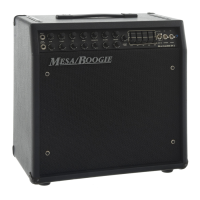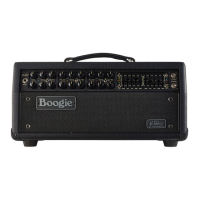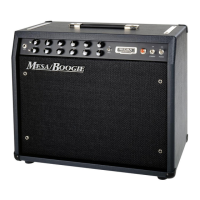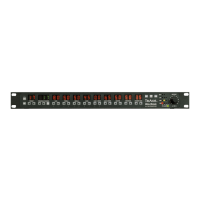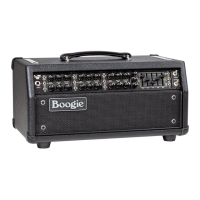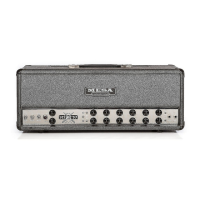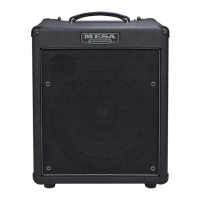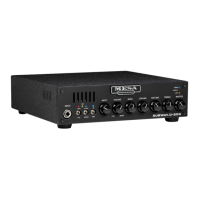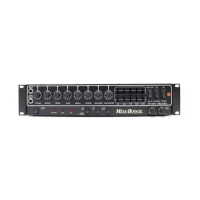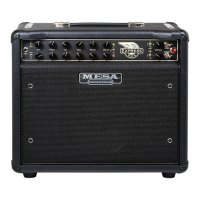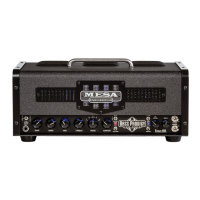FRONT PANEL
INPUTS
Two INPUTS are provided on the California Tweed to allow for different gain levels, pickup output levels and Tone.
NORMAL is the “full strength Input and allows the full signal of your instrument to hit the first stage of the preamp. This Input allows
more touch sensitive transitioning between clean and overdriven sounds when the GAIN control is set above 11:30 or 12:00, depending
on your pickup’s output. The higher the setting of the GAIN control, the more easily you will be able to push the preamp, and even
power section (depending on wattage selected at the Rotary POWER SELECT) into clip or overdrive.
The NORMAL Input is also the brighter Input and allows the maximum harmonic content from you instrument to pass on through the
preamp. This will ensure the Tone Controls react with their full power and the gain levels to reach their maximum. Most of the critical
“Toning” during the development of the amplifier was done using the NORMAL Input, so as to ensure all gain regions and frontiers
were explored and refined to their absolute maximum potential. We suggest using the NORMAL Input first and exploring the amplifier,
as it will provide the unadulterated full range of sounds possible with any given guitar.
The LOW Input should be explored for maximum headroom at the input of the preamp, and/or for the absolute cleanest (not neces-
sarily brightest, which can often be confused for cleanest) response and character. For the loudest version of this, also use the 40
watt setting on the POWER SELECT Rotary. This LOW Input is padded down so that a reduced signal is seen at the first tube stage.
This padding also reduces the punch and brightness, so you will have to determine what you are looking for, headroom or cut. More
Cut would actually be possible with the NORMAL Input, as though it may be less pristine in terms of the onset of clip, it’s inherent
punch and more active Tone controls due to the higher signal strength may actually sound cleaner, or feel better in an ensemble.
Experiment with both Inputs to learn which one works best for your application. Just be aware that often brightness is often confused
with headroom, clarity and even power.
The LOW Input and its inherent top end roll off can be nice for Jazz playing or single note solo work where cleanliness and a warmer
character is desired. It may take a bit to get accustomed to the less urgent and less forward/punchy feel as compared to the NORMAL
Input, but there are some nice and unique sounds available using LOW when you explore it for the right applications. Just remember
it will be all but impossible to achieve much clipping or even subtle breakup in LOW, as the signal strength just won’t be there to push
the preamp stages into saturation.
GAIN
This is, by far, the most powerful control in the Preamp and its setting determines the style and personality of the sound.
It meters the gain and it sets Input Stage headroom, which determines whether the sound will be clean or begin to be overdriven.
It also acts as a subtle Tone control as the tube stages’ gain is increased and decreased and imparts its own “color” on the sound.
There are three regions of the GAIN control; a low gain zone between 9:00 - 11:30, a warmer, more saturated zone from 11:30 - 2:00
and a higher gain zone from 2:30 – 5:00. Each of these zones can be used for many different applications and all can be used for
both chording and single note solo work. As the GAIN control is swept throughout its range it imparts different textures and tonal
characteristics.
Generally speaking, the lower end of the control (9:00 – 11:30) produces a brighter, more open character that has more dynamic
content available. This region is great for clean, sparkling chording where the maximum headroom is available, the top end harmon-
ics are bubbly and the attack is fast. There is an abundance of dynamic range as the signal has not yet been compressed by much
saturation.
The middle region of the GAIN control (11:00 – 2:00) is where the most balanced sounds live and you will find this region delivers
warm, full sound, detailed attack and good dynamics. This range delivers great chording response, sounds richer and has more body
with the cleanest sounds falling off fairly rapidly as the GAIN is turned past 12:30. Depending on pickup style and strength you will
have to watch for clipping as you are nearing the crossover or threshold point gain-wise between clean and some saturation. Some
of the most expressive best sounds possible are to be found here, as things start smearing nicely as they transition more and more
toward tube overdrive.
PAGE 5
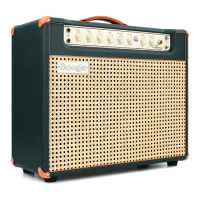
